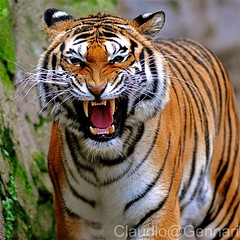Ecology (Pre-AP) Flashcards
Terms : Hide Images [1]
| 4916678789 | In a stable environment, population sizes tend to | stay the same. |  | 0 |
| 4916678790 | mutualism | An interaction in which both species benefit. |  | 1 |
| 4916678791 | predation | An interaction in which one species benefits and the other is killed. |  | 2 |
| 4916678792 | parasitism | An interaction in which one species benefits and the other is harmed (but usually not killed). |  | 3 |
| 4916678793 | commensalism | An interaction in which one species benefits and the other is neither harmed nor benefits. |  | 4 |
| 4916718649 | competition | An interaction where both species are harmed when they want the same resource. |  | 5 |
| 4916678794 | omnivore | A species that eats meat and plants. |  | 6 |
| 4916678795 | carnivore | A species that eats meat. |  | 7 |
| 4916678796 | herbivore | A species that eats plants. |  | 8 |
| 4916682207 | detritivore | organism that eats dead organic matter. Another term for decomposer. |  | 9 |
| 4916684397 | detritus | Nonliving organic matter, like the remains of dead organisms, feces, fallen leaves, dead wood, etc. |  | 10 |
| 4916678797 | decomposers | Organisms that break down the dead remains of other organisms. Example: mushrooms, earthworms. |  | 11 |
| 4916713722 | scavenger | A carnivore that feeds on the bodies of dead organisms |  | 12 |
| 4916678798 | niche | An organism's job and range of conditions it needs is a |  | 13 |
| 4916678799 | carrying capacity | The number of individuals that the environment can support. |  | 14 |
| 4916678800 | trophic level | Each step in a food chain or food web |  | 15 |
| 4916678801 | What happens to energy as it moves to each trophic level? | 90% is lost and only 10% remains. | 16 | |
| 4916678802 | food chain | A simplified path in which energy is transferred when one organism eats another. |  | 17 |
| 4916678803 | food web | Diagram that represents the many energy pathways in a real ecosystem |  | 18 |
| 4916678804 | autotroph | An organism that makes its own food. Also called a 'producer'. |  | 19 |
| 4916678805 | heterotroph | An organism that eats others for its food. Also called a 'consumer'. |  | 20 |
| 4916678806 | nitrogen cycle | The transfer of nitrogen from the atmosphere to the soil, to living organisms, and back to the atmosphere | 21 | |
| 4916678807 | carbon cycle | The organic circulation of carbon from the atmosphere into organisms and back again. | 22 | |
| 4916678808 | carbon source | Releases more carbon into the atmosphere than it takes in. | 23 | |
| 4916678809 | examples of carbon sources | decomposing organisms, burning fossil fuels, volcanos, forest fires |  | 24 |
| 4916678810 | carbon sink | Stores more carbon from the atmosphere than it releases. | 25 | |
| 4916678811 | examples of carbon sinks | oceans, soils, plants performing photosynthesis |  | 26 |
| 4916678812 | biotic factors | All the living organisms that inhabit an environment |  | 27 |
| 4916678813 | abiotic factors | Nonliving components of environment. |  | 28 |
| 4916678814 | limiting factors | Conditions in the environment that put limits on where an organism can live or how much the population can grow. |  | 29 |
| 4916678815 | biomass | Total amount of living tissue within a trophic level |  | 30 |
| 4916678816 | primary succession | The sequence of events that replace the organisms in a disrupted habitat where NO soil remains. |  | 31 |
| 4916678817 | secondary succession | The sequence of events that replace the organisms in a disrupted habitat where the soil remains. |  | 32 |
| 4916678818 | population | A group of individuals that belong to the same species and live in the same area |  | 33 |
| 4916678819 | community | A group of organisms inhabiting the same region and interacting with each other. |  | 34 |
| 4916678820 | ecosystem | A community of organisms and their non-living environment. The biotic and abiotic factors. |  | 35 |
